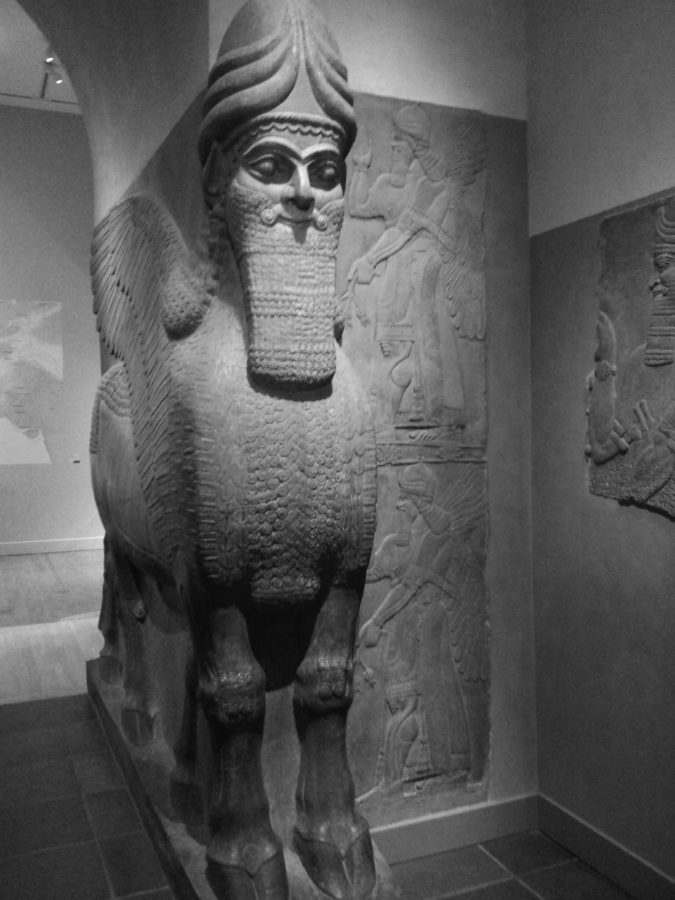The islamic state destroys priceless antiquities in iraq
During the month of March, the self-proclaimed Islamic State, also known as ISIS, has targeted numerous museums and historical sites for destruction. The terrorist organization has been bulldozing and looting areas of cultural or historical significance in Iraq and Syria for months as part of its goal to establish a fundamentalist Islamic regime. However, the destruction has been ramped up in recent weeks.
ISIS’s offensive in northern Iraq during the last several months has left many archeological sites and museums vulnerable, and the list of artifacts destroyed, defaced or stolen continues to grow. A recent video that circulated online depicts ISIS extremists toppling dozens of ancient statues and smashing others with sledgehammers at the Mosul Museum. The museum houses priceless relics from the Assyrian Empire, a civilization that dominated Iraq almost three thousand years ago.
However, the terrorist group has not limited itself to museums. Many archeological sites have been destroyed with bulldozers and other construction equipment or explosives after lasting thousands of years. The Assyrian cities of Nimrud, known for preserved frescoes, and Khorsabad, renowned for stone relief sculptures, have been bulldozed by ISIS extremists. Jonah’s tomb, a grave within a Sunni mosque that is believed to be the burial place of the biblical figure central to Christian beliefs, has also been razed. And after surviving Roman attacks thousands of years ago, the Parthian walled city of Hatra has been leveled.
ISIS’s program of destruction is motivated by both religious and practical reasons. The terrorist group is driven by the ideology of radical Islam, and its adherents believe that religious shrines and art – whether Jewish, Christian, or Islamic – are violations of the Qur’an’s prohibition of idol worship. As a result, ISIS fighters consider destroying religious artwork and statuary a religious duty. According to Irina Bokora, Director-General of the United Nations Economic, Scientific and Cultural Organization (UNESCO), ISIS seeks to project its own power by erasing the history and culture of past civilizations that have ruled Iraq, such as the Assyrian Empire, in its quest to establish an Islamic caliphate in the Middle East. By destroying the heritage of previous societies, ISIS hopes to raise its own stature in the eyes of Iraqis and radical Muslims. Additionally, ISIS also seeks to attract new members with its latest stunts – the group has a strong media presence online, and its rampage through the Mosul Museum was quickly filmed and uploaded online as a propaganda video. However, in spite of the organization’s self-professed religious beliefs, ISIS operates a flourishing black-market trade in stolen artifacts, which provides a steady stream of revenue. Much of ISIS’s destruction is just for show – anything small enough to be stolen easily is sold to illicit buyers. Only artifacts too big to steal are defaced.
The destruction of art and architecture in Iraq has been widely condemned by the international community. In an interview with CNN, Bokora labelled ISIS’s actions “cultural genocide” and a war crime. Last fall, U.S. Secretary of State John Kerry promised action to protect cultural heritage, but circumstances in Iraq are often too dangerous for international art conservation efforts. While UNESCO has an office in Baghdad, Iraq’s capital, sending people into northern Iraq is too risky. In addition, the country’s security forces are focused on defeating ISIS on the battlefield, not protecting historical sites. As a result, the hard work of conservation has fallen to locals, many of whom are threatened by ISIS terrorists or are unable to resist ISIS fighters’ advances.
It is unknown when the destruction will end, but UNESCO sees no end in sight as long as ISIS maintains control over northern Iraq. In the meantime, UNESCO is focusing on stabilizing damaged sites to prevent further damage.




